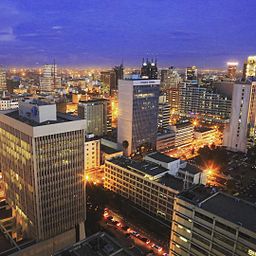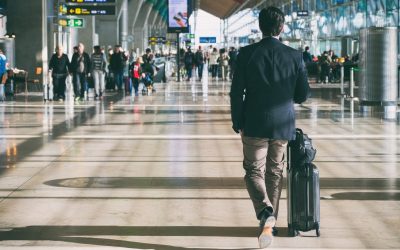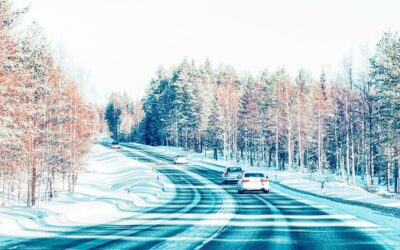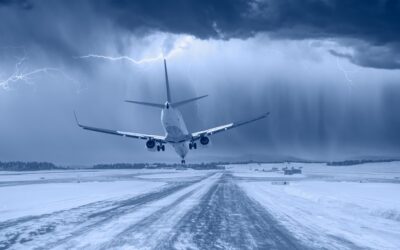Nairobi Kenya’s capital and city of contradictions
Uncategorised Posted by gaytravel on Fri, Feb 16th, 2018 @ 8:25:56 AM 208 73

Nairobi is the capital and largest city of Kenya. The city proper has a population of over 3 million people while the metropolitan area has a population of over 6,5 million. It is the second-largest city by population in the African Great Lakes region after Dar es Salaam, Tanzania. It is also the 10th-largest city in Africa, including the population of its suburbs. Nairobi is popularly referred to as the Green City in the Sun. Colonial authorities in British East Africa found Nairobi in 1899. It served as a rail depot on the Uganda Railway. In that time the city was a centre for the colony’s coffee, tea and sisal industry. In 1907 Nairobi had grown big enough to replace Machakos as the capital of Kenya. After independence in 1963, it became the capital of the Republic of Kenya. The city lies on the River Athi in the southern part of the country and has an elevation of 1,795 metres (5,889 ft) above sea level.
© The original uploader was Mkimemia at English Wikipedia (Transferred from en.wikipedia to Commons.) [GFDL or CC-BY-SA-3.0], via Wikimedia Commons
The economy of Nairobi
Nairobi is home to the Nairobi Securities Exchange (NSE), one of the largest in Africa. The NSE was officially recognized as an overseas stock exchange by the London Stock Exchange in 1953. The stock market is the fourth largest in Africa in terms of trade volumes and the fifth largest in terms of market capitalization as a percentage of GDP.
Nairobi has regional head offices of various international companies and organizations. In 2007, General Electric, Young & Rubicam, Google, Coca-Cola, IBM Services, Airtel and Cisco Systems moved their African headquarters here. The UN office in Nairobi accommodates the head office of UN Environment and UN-Habitat.
Many large African companies have their headquarters in Nairobi. Such as Safaricom and KenGen. Kenya Airways, the 4th largest airline in Africa, uses Nairobi’s “Jomo Kenyatta International Airport”.
Nairobi is also favored by the FinTech phenomenon that has been adopted worldwide. It has produced a number of technology companies such as Craft Silicon, Kangai Technologies, Jambo Pay etc. These are already in the foreground in the field of technology, innovation and cloud-based computer services. Their products are widely used and have a significant market share within Kenya and beyond its borders.
Goods such as clothing, textiles, building materials, processed foods, beverages and cigarettes are manufactured in Nairobi. Several foreign companies have factories in and around the city such as Goodyear, General Motors, Toyota Motors and Coca-Cola.
Nairobi also has a large tourist industry, both in terms of the tourist destination and transport.
Central business district and skyline
Nairobi has grown around its central business district. This has a rectangular shape. This is around the Uhuru Highway, Haille Selassie Avenue, Moi Avenue and University Way. Here are many important buildings of Nairobi, including the city hall and the parliament building. The city square is also within the perimeter.
Most skyscrapers in this region are corporate headquarters. The bomb attack on the American embassy took place in this district, which led to the construction of a new embassy building in the suburbs.
In 2011 the city had about 4 million inhabitants. A major embellishment project took place in the Central Business District, when the city was preparing for the summit of the Afri-Cities 2006. Iconic buildings such as the Kenyatta International Conference Center have cleaned and painted their exterior.
The center of Nairobi or the central business district borders Uhuru Park and Central Park in the southwest. The Mombasa to Kampala railway runs to the southeast of the district.
Upper Hill
Nowadays, many companies are considering moving house and / or establishing their headquarters outside the Central Business District area. The country is cheaper there and there are better facilities. Two areas with growth in businesses and office space are Upper Hill, located about 4 km from the Central Business District and Westlands, which is also about the same distance, away from the city center.
Construction
Kibera

Nairobi slums
Kibera is one of the most studied slums in Africa. Located in the center of the city, UN-HABITAT, the United Nations Human Settlement Agency, also has its headquarters nearby. Ban Ki-moon visited the settlement within a month of being selected as the UN Secretary General.
Kibera is currently undergoing an intensive upgrade process. The government, UN-HABITAT and a contingent of NGOs, notably Maji na Ufanisi, are trying to improve housing and sanitary conditions.
Three important factors complicate construction within Kibera. The first is crime. Building materials cannot be left unattended for too long as there is a high probability of them being stolen. Owners of storm-damaged homes often have to camp on the remains of their homes until repairs can be made. Meanwhile, the resources are unprotected from potential thieves.
The second is the lack of building foundations. The soil in much of Kibera is literally composed of waste. Homes are often built on top of this unstable ground, which is why they collapse in the event of frequent floods. Well-constructed buildings are also often damaged by the collapse of nearby poorly-constructed buildings.
The third complicating factor is the area’s topography and tight sprawl. Few houses have access to the public road and many are at the bottom of steep slopes where the risk of flooding is higher. This entails additional costs as all materials have to be entered by hand.
Kibera
On September 16, 2009, the Kenyan government, which claims to own the territory of Kibera, began a long-term plan to relocate the residents of Kibera.
This plan would take two to five years. The whole project was scheduled to last nine years and served to house all the slum residents in the city. Estimated cost was $ 1.2 billion. The new neighborhoods were to include schools, markets, playgrounds and other amenities. The first batch to leave the slums numbered around 1,500 people. At 6:30 am local time on September 16, 2009, they were transported by truck and housed in 300 newly built apartments with a monthly rent of approximately $ 10. Several dozen armed police officers oversaw the schemes and opposed resistance.
The trial has been legally challenged by more than 80 people. A mix of middle class middle class Kibera. They claim that the land in Kibera belongs to them and therefore the government has no right to demolish the huts. The Kenyan Supreme Court has stated that the government cannot start demolition work until the case is heard in October. However, the government is allowed to demolish the houses of people who leave voluntarily before then.
The 80 prosecutors are a Nubian community that has lived on the land for nearly 100 years. They are disappointed with the arrangement. An elderly person believes that the current home should be improved instead of demolishing.
The project has also come under fire from urban planners who say they reiterated the mistakes of previous schemes. Poor families often shared two-room apartments with one or two other families to pay the rent. Either they rented them out to middle-class families and moved back to the slums. The minimum wage of a worker in Kenya is less than $ 2 a day.
There is also controversy over the timing of the project. The first phase involving the relocation of 7,500 people has been delayed by five years. One government official claims that if the project continues at its current pace, it will take another 1,178 years to complete.
Real estate
Highrise
Nairobi is currently undergoing a construction boom. Major real estate projects and skyscrapers are coming up in the city. Among them are: Hass twin towers which will tower at 212m, Britam Tower (198m), Avic International Africa headquarters (176m), Prism tower (140m), Pan Africa insurance towers, Pallazzo offices, and many other projects. Shopping malls are also being constructed like the recently completed Garden city Mall, Centum’s Two rivers Mall, The Hub in Karen, Karen waterfront, Thika Greens, and the recently reconstructed Westgate Mall. High-class residential apartments for living are coming up like Le Mac towers, a residential tower in Westlands Nairobi with 23 floors. Avic International is also putting up a total of four residential apartments on Waiyaki way: a 28-level tower, two 24-level towers, and a 25-level tower. Hotel towers are also being erected in the city. Avic International is putting up a 30-level hotel tower of 141m in the Westlands. The hotel tower will be operated by Marriot group. Jabavu limited is constructing a 35 floor hotel tower in Upper Hill which will be high over 140 metres in the city skyline. Arcon Group Africa has also announced plans to erect a skyscraper in Upper hill which will have 66 floors and tower over 290 metres, further cementing Upper hill as the preferred metropolis for multinational corporations launching their operations in the Kenyan capital.
Nairobi’s tallest skyscrapers
| # | Name | Height (m) | Height (ft) |
|---|---|---|---|
| 1 | Pinnacle Towers | 274 m | (899 ft) |
| 2 | UAP Tower | 163 m | (535 ft) |
| 3 | Times Tower | 140 m | (460 ft) |
| 3 | Teleposta Towers | 120 m | (390 ft) |
| 3 | Kenyatta International Conference Centre | 105 m | (344 ft) |
| 3 | NSSF Building | 103 m | (338 ft) |
| 3 | I&M Bank Tower | 100 m | (330 ft) |
| 3 | Nyayo House | 84 m | (276 ft) |
| 3 | Cooperative Bank House | 83 m | (272 ft) |
| 3 | National Bank House | 82 m | (269 ft) |
| 3 | Hazina Towers | 81 m | (266 ft) |
| 3 | Rahimtulla Tower | 80 m | (260 ft) |
National parcs and gardens
Nairobi has many parks and open spaces in the city. A large part of the city has dense vegetation and lots of greenery.
Uhuru parc
The most famous park in Nairobi is Uhuru Park. The park is adjacent to the central business district and the Upper Hill neighborhood. Uhuru (freedom in Swahili) Park is a center for outdoor speeches, services and gatherings. The park was to be built by former president Daniel arap Moi, who wanted the 62-story headquarters of his party, the Kenya African National Union, located in the park. However, the park was saved after a campaign by Wangari Maathai, winner of the Nobel Peace Prize.
Central parc
Central Park borders Uhuru Park and includes a monument to Jomo Kenyatta, the first president of Kenya. You will also find the Moi monument, built in 1988 to commemorate the first decade of the power of the second president.
Other notable open spaces are Jeevanjee Gardens, City Park, 7 August Memorial Park and Nairobi Arboretum.
The colonial master plan of 1948 for Nairobi still functions as the government mechanism when it comes to making decisions regarding city planning. The then Master Plan, which was designed for 250,000 people, allocated 28% of Nairobi’s land to the public space, but due to the rapid population growth, much of the vitality of public spaces in the city is increasingly threatened.
City Park, the only nature park in Nairobi, for example, was originally 150 hectares, but has since lost about 50 hectares of land to private development through squatters and illegal alienation, which began in the 1980s.
Nairobi National Park
The first national park of Kenya was Nairobi National Park. It exists more than 70 years. It is located about 7 kilometers south of the center of Nairobi, the capital of Kenya, and has an electric fence that separates the animals from the park from the metropolis. The skyscrapers of Nairobi can be seen from the park. The proximity of urban and natural environments has caused conflicts between animals and the local population and threatens animal migration routes.Despite the proximity of civilization and relatively small dimensions for an African national park, Nairobi National Park has a large and varied flora and fauna. Migrant herbivores gather in the park during the dry season. It is one of the most successful rhino reserves in Kenya.
Flora of Nairobi National Park
The park’s predominant environment is open grass plain with scattered Acacia bushes. The western uplands of the park have a dry forest highland with stands of Olea africana, Croton dichogamus, Brachylaena hutchinsii, and Calodendrum. The lower slopes of these areas are grassland. Themeda, cypress, Digitaria, and Cynodon species are found in these grassland areas. There are also scattered yellow-barked Acacia xanthophloea. There is a riverine forest along the permanent river in the south of the park. There are areas of broken bush and deep rocky valleys and gorges within the park. The species in the valleys are predominantly Acacia and Euphorbia candelabrum. Other tree species include Apodytes dimidiata, Canthium schimperiana, Elaeodendron buchananii, Ficus eriocarpa, Aspilia mossambicensis, Rhus natalensis, and Newtonia species. Several plants that grow on the rocky hillsides are unique to the Nairobi area. These species include Euphorbia brevitorta, Drimia calcarata, and Murdannia clarkeana.
Fauna of Nairobi National Park

Rhinos in National park in Nairobi
Herbivores, as wildebeest and zebra, use the Kitengela conservation area and migration corridor to the south of the park to reach the Athi-Kapiti plains. They disperse over the plains in the wet season and return to the park in the dry season. The concentration of wildlife in the park is greatest in the dry season, when areas outside the park have dried up. Small dams built along the Mbagathi River give the park more water resources than these outside areas. They attract water dependent herbivores during the dry season. The park is the northern limit for wildlife migrations in the dry season.
The park houses also many bird species. There are 500 permanent and migratory species in the park.
Dams have created a man-made habitat for birds and aquatic species.
Since 1963 the “David Sheldrick Trust” sanctuary hand-rears orphaned elephant and rhinoceros calves, to release them back into secure sanctuaries later. Orphaned and sick animals are brought to the sanctuary from all over Kenya. The sanctuary is located close to the park’s main entrance. It was set up by Daphne Sheldrick after the death of her husband David Sheldrick, the anti-poaching warden of Tsavo National Park. Nairobi National Park is sometimes called Kifaru Ark, which means “Rhinoceros Sanctuary”. It is one of Kenya’s most successful rhinoceros sanctuaries, and it is one of only a few parks where visitors can be certain of seeing a black rhinoceros in its natural habitat.
Tourism
Nairobi National park make the city a prime tourist destination together with its included Safari Walk.
There are further several museums, sites, and monuments with the Nairobi National Museum as the largest museum in the city. It houses a large collection of artefacts portraying Kenya’s rich heritage through history, nature, culture, and contemporary art. You find there also the full remains of a homo erectus, known as the Turkana boy. Other prominent museums include the Nairobi Gallery, Nairobi Railway Museum, and the Karen Blixen Museum located in the affluent Karen suburb. Uhuru Gardens, a national monument and the largest memorial park in Kenya, is also the place where the first Kenyan flag was raised at independence. It is located along Langata road near the Wilson Airport.
What is NEXXTRIP?
NEXXTRIP is a travel site with flight search engine based upon AVIASALES. Except for flights it also offers hotels and holidays packs from different travel agents. NEXXTRIP also has gay travel and a business directory.
NEXXTRIP - trusted by 100 000 + regular travelers
MDB free download

























